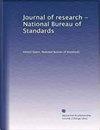Ethyl Carbamate Analysis in Fermented Products: A Comparison of Measurements of Mass Spectrometry, Thermal Energy Analyser, and Hall Electrolytic Conductivity Detector
Journal of research of the National Bureau of Standards
Pub Date : 1988-05-01
DOI:10.6028/jres.093.033
引用次数: 2
Abstract
4. References > 1000 jAg/L. Typically, the concentration is low in wine and high in some spirits; the concentration is particularly high in some plum brandies but is low in gin and vodka. Literature methods [1,2,31 rely on sample clean-up followed by packedcolumn GC and detection by FID, alkali flame ionisation, electron capture, or Coulson electrolytic conductivity detector and allow measurements down to 10 Itg/L. The clean-up procedure required for levels below 100 jg/L is extensive and MS confirmation is still required. I.5 I~a 21 In the course of a study of ethyl carbamate levels in alcoholic beverages on sale in U.K., different methods of separation and measurement were as-发酵产品中氨基甲酸乙酯的分析:质谱、热能分析仪和霍尔电导率检测器测量的比较
4. 参考文献> 1000 jAg/L。通常情况下,这种浓度在葡萄酒中较低,在某些烈酒中较高;一些李子白兰地的浓度特别高,但杜松子酒和伏特加的浓度很低。文献方法[1,2,31]依赖于样品清理,然后是填充柱GC和FID,碱火焰电离,电子捕获或库尔森电解电导率检测器检测,并允许测量低至10 Itg/L。对于低于100 jg/L的水平,需要进行广泛的清理程序,并且仍然需要进行质谱确认。在对英国销售的酒精饮料中氨基甲酸乙酯含量的研究过程中,采用了不同的分离和测定方法
本文章由计算机程序翻译,如有差异,请以英文原文为准。
求助全文
约1分钟内获得全文
求助全文

 求助内容:
求助内容: 应助结果提醒方式:
应助结果提醒方式:


